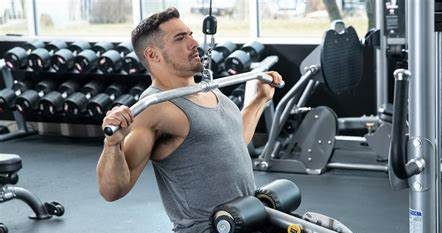Fitness. It’s a word thrown around constantly, yet for many, it remains an elusive concept. But what exactly is fitness? In essence, it’s the state of well-being that allows you to handle your daily activities with ease, reduces your risk of chronic diseases, and boosts your overall energy and mood. The key to achieving this state lies in a commitment to exercise, and navigating the world of gyms and workouts can be a daunting first step. This guide will equip you with the knowledge and motivation to embark on your personalized fitness journey.
Understanding Exercise: The Foundation of Fitness
Exercise is any bodily activity that strengthens your muscles and improves your cardiovascular health. It’s the magic ingredient that unlocks the door to a fitter you. Here’s a breakdown of the different types of exercise and their benefits:
- Cardiovascular Exercise (Cardio): This gets your heart pumping and improves your breathing. Activities like running, swimming, cycling, and dancing fall under this category. They boost your endurance, strengthen your heart, and can aid in weight management.
- Strength Training: This involves using weights, resistance bands, or your own bodyweight to build muscle mass and strength. Squats, lunges, push-ups, and weightlifting exercises fall into this category. Strength training not only helps you sculpt your physique but also improves bone density, metabolism, and functional movement.
- Flexibility Training: This helps improve your range of motion in your joints and keeps your muscles loose. Stretching, yoga, and Pilates are excellent ways to enhance flexibility, which can reduce your risk of injury and improve your overall well-being.
The magic formula lies in incorporating a combination of these types of exercise into your routine. This ensures a well-rounded approach to fitness that addresses all aspects of your physical health.
Gyms: Your One-Stop Shop for Fitness Equipment
Gyms offer a plethora of equipment and facilities to help you achieve your fitness goals. They provide a structured environment with various machines, weights, and workout areas. Here’s what you can expect at a gym:
- Cardiovascular Equipment: Treadmills, ellipticals, stationary bikes, and rowing machines provide excellent options for cardio workouts. Most gyms offer a variety of these machines with adjustable settings to cater to different fitness levels.
- Strength Training Equipment: Free weights (dumbbells and barbells), weight machines, resistance bands, and cable machines allow you to target specific muscle groups and build strength. Gyms usually have dedicated areas with a wide selection of this equipment.
- Group Fitness Classes: Many gyms offer a variety of group fitness classes, from high-intensity interval training (HIIT) to yoga and Zumba. These classes provide a fun and social way to get your workout in, often led by certified instructors.
- Amenities: Gyms may offer additional amenities like swimming pools, locker rooms, saunas, and steam rooms. These can be excellent tools for recovery and relaxation after your workout.
Choosing the Right Gym:
With so many gyms vying for your membership, it’s important to choose one that aligns with your needs and budget. Consider factors like location, equipment availability, class offerings, and overall atmosphere. Look for gyms offering free trial periods so you can try out the facilities and equipment before committing.
Designing Your Workout: A Blueprint for Success
Now comes the exciting part – crafting your personalized workout routine! Here are some key aspects to consider:
- Your Fitness Goals: What do you hope to achieve with your workouts? Do you want to lose weight, gain muscle, improve endurance, or simply become more active? Defining your goals will help you tailor your exercise selection and intensity.
- Your Current Fitness Level: Are you a beginner, intermediate, or advanced exerciser? Beginners should start slow and gradually increase intensity and duration over time. More experienced individuals can push themselves with more challenging exercises and higher weights.
- Frequency and Duration: Aim for at least 150 minutes of moderate-intensity cardio or 75 minutes of vigorous-intensity cardio per week. Strength training should involve working all major muscle groups at least twice a week with rest days in between.
- Warm-up and Cool-down: Never underestimate the importance of a proper warm-up before your workout to prepare your muscles and joints. Similarly, a cool-down with stretching helps your body recover and prevents injuries.





